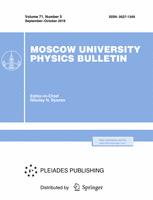The periodic solutions of Poincare to the problem of planar translational- rotational motion of a solid body in the attractive field of a sphere are used to elucidate the periodic perturbations in the motion of the Sun-Mercury and Earth-Moon systems. The necessary conditions for the stability of the periodic solutions are obtained and analyzed, and the theoretical values of the parameters $δ = (B - C)/B - A)$, where A, B, and С are the principal central moments of inertia of the body, are found in accordance with these conditions. For the Moon, $δ_{L}=1,5$ and for Mercury, $δ_{M}=1,18$. The periodic solutions give theoretical values of the librations of the Moon and Mercury in the orbital planes (26.175" for the Moon and 10.098" for Mercury). The periodic perturbations of the semimajor axis of the lunar orbit due to the asphericity of the Moon have an amplitude of 1.669 m. The angular distance to the perigee undergoes oscillations of amplitude 0.076". Thus, for determining relativistic effects in the motion of the Moon it is important to take rigorously into account the connection between the translational and rotational motions of the Moon. The perturbations of the orbital motion of Mercury due to its asphericity are of insignificant size.
Московский государственный университет имени М.В. Ломоносова, физический факультет, ГАИШ. Россия, 119991, Москва, Ленинские горы, д. 1, стр. 2



